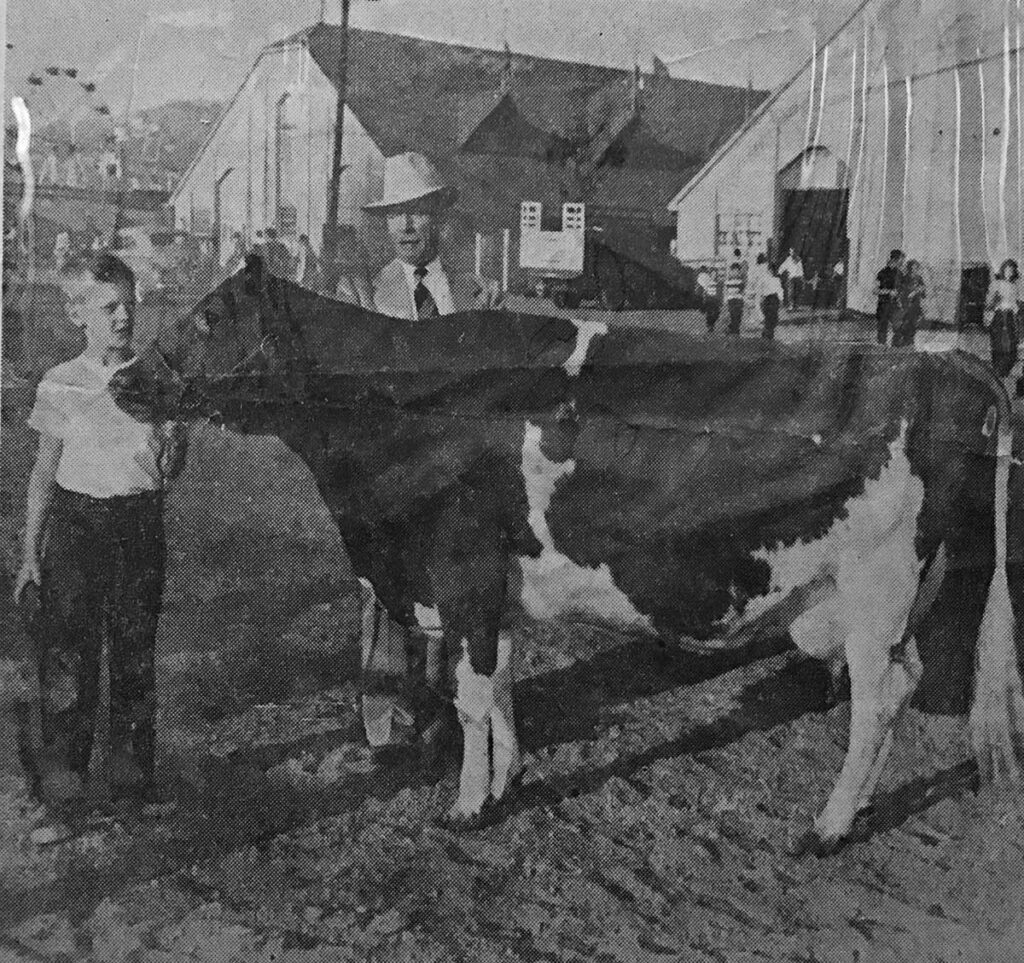Anyone who has recreated in Thaynes Canyon knows it is an active, well-traveled place. Turns out that’s always been the case, with its history of mining, agriculture, lumber, the raising of thoroughbred horses and prize cows, and even the manufacture of bootleg whiskey.
The canyon’s namesake, John Johnson Thayne, was born in Scotland in 1825. As a child, he emigrated to Ontario, Canada. Life grew hard when his father died shortly upon their arrival. A family memoir states: “The family was left without much property or money, in a cold country. At times they were obliged to peel the bark from fences for fuel to keep warm.”
Surviving these hard times, Thayne developed a head for business. He traveled widely to sell a glue he made for repairing china. A member of the Church of Jesus Christ of Latter-day Saints, Thayne met his wife-to-be Sidney Boyer on one such sales call, and upon marriage, the couple moved to Iowa in 1855. There he made a good living running a sawmill, something he would do for most of his life.
In 1861, they moved to Utah, and established a home in Sugarhouse. At this time, Thayne entered the practice of polygamy by marrying Elizabeth Hunt, who had traveled in the same party of Saints from Iowa. Thayne had fourteen children by his two wives.
Shortly after their arrival in Salt Lake City, Thayne built a water-powered sawmill in Mill Creek canyon and a steam-powered one in the Park City canyon. Both operated until 1875. The exact location of the Thaynes Canyon mill is unknown, and there is mystery involved with it. The memoir continues: “Enemies or someone who was jealous burned one sawmill down and he lost most of his property.”
The family then moved to Woodland, UT, establishing another sawmill using the Mill Creek equipment. Thayne died in 1910 in Wellington, UT.
In 1878, Civil War veteran William M. Ferry and his wife Jeannette arrived in Park City and bought 160 acres at the mouth of Thaynes Canyon. In 1890, they built a large wooden Victorian mansion filled with stained glass and other ornate touches. Upon the colonel’s death in 1915, the Silver King Consolidated Mining Company purchased the home. U.S. Senator and mining magnate Thomas Kearns spent summers there, and raised thoroughbred horses, a common practice among his contemporaries such as Hearst, Haggin, and Crocker. The mansion was latermoved to Park Meadows and is in private hands.
In 1894, P.J. Sullivan bought ranchland in Thaynes canyon. Sullivan – known as the “milkman” – raised dairy cows, and his wife Elizabeth continued operations upon his death in 1898. Apparently, milk was not the only drink available on the premises. In 1921, three men – one of whom was named Jack Sullivan – were arrested for operating an illegal whiskey still in the canyon. In 1924, the sheriff raided another bootlegging operation on the ranch. Someone named Dan Sullivan grabbed the small still that was set up in the woods and outran the Sheriff, avoiding arrest briefly.
Around 1930, the Sullivans sold the property to local mine manager Andrew Hurley, who built the 35 x 140-foot barn, now known as the Armstrong barn. Salt Lake City banker and mayor Herbert Snow then bought the ranch in 1934 and continued the dairy operations until his death in 1957. The ranch – called Snow’s Summit Ranch – stayed in the family.

Credit: Salt Lake Tribune, September 18, 1951 clipping.
Snow’s daughter Heloise married William Melbourne Armstrong and her children all lived on the property at one time. Heloise’s sons, Herbert “Herbie” Snow Armstrong and William Melbourne Armstrong Jr. worked alongside their grandfather and took prize Guernsey milk cows to the Utah State Fair. Their stock won Grand Champion several times.
Herbert and Mel were instrumental in preserving much of the lands in Thaynes Canyon that were part of the original Snow’s Summit Ranch. The November 2018 bond passed by Park City voters that preserved Treasure Hill also included funding for the Armstrong Snow Ranch Pastures. Herbert Armstrong and Mel’s wife Kerry Armstrong made a substantial contribution of value to ensure the pastures were protected. The iconic 1926-era dairy barn which Mel and Kerry restored in the late 70s is protected under a conservation easement as well. Utah Open Lands (UOL) currently holds three easements preserving about 175 acres in the canyon.
These and other topics of historic and ecological interest will be covered on an August 15 hike led by Wendy Fisher and local hiking guide Michael O’Malley. Park City Museum membership is required to join the hike. Become a member at parkcityhistory.org.